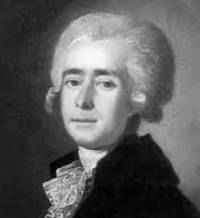Trisagion (for three-part choir) by Bortniansky, Dmytro - 1992: Sancte Deus/Svyaty Bozhe
by Bortniansky, Dmytro

Trisagion (for three-part choir): Sancte Deus/Svyaty Bozhe
by Bortniansky, Dmytro
- New
- Paperback
OVERALL DESCRIPTION...........
Here presented in the form of a choral octavo, is an English-language setting of the famous Svaty Boze. First published in The Johannine Hymnal, by ACP, this setting of the Trisagion [triSAHgeeawhn], the "thrice-holy," is presented here in four languages: Latin, Greek, Old Slavonic, and English. The standard arrangement by Bortniansky is presented, much as it is sung today in the Divine Liturgy of the Ukrainian, Russian, Belarussian, Serbian, and Bulgarian Churches. Also included is a setting based upon the original arrangement of the Trisagion, as an antiphon for an entrance song at the celebration of the Eucharist, the Divine Liturgy, in the Church of Constantinople, once known as Byzantium. Both settings in this octavo are intended for use in the Roman Rite, as part of the celebration of the Mass...........
MUSICAL SETTINGS IN THIS OCTAVO..........
As in Byzantine Churches, the first setting of the Trisagion in this octavo involves a threefold repetition of the antiphon: "Sancte Deus," then "Hagios ho Theos," then "Svyaty Bozhe." There follows in English the doxology, "Glory Be to the Father," then the antiphon once again, "Holy God."
Alternatively, the choir could sing the entire song just in English, by singing the antiphon three times at the beginning in that language, instead of in Latin, Greek, and Old Slavonic...........
HISTORICAL OVERVIEW..........
As in the early Byzantine Rite of the "Great Church," Hagia Sophia, the cathedral of Constantinople, there was a different use of the Trisagion. The second setting in this octavo represents this practice. Here, there was separate music for the choir, the people, and the cantor. All three had their own form of participation. For example, the choir would sing the antiphon three times at the beginning and at the very end of the song. In between, as the entrance procession went on, a cantor would sing the verses of a Psalm. The people would respond to each verse with a simple refrain, in this case, "Holy, Immortal One, have mercy on us." [It is also possible that the entire phrase, "Holy God," etc. served as a refrain.] Use of a simple refrain such as this enables the people to participate without looking down into a hymnal and to sing their part from memory; in this way, they would be able to look at the ministers in procession, moving through the church and into the sanctuary. The procession would conclude with the cantor singing the doxology, the "Glory Be to the Father," and the refrain repeated one last time by the people, then the antiphon once by the choir. If more verses were needed, the cantor would begin again with verse one. If fewer verses were needed, the cantor would simply cut the Psalm short and end with the doxology...........
WIDESPREAD USE OF THE TRISAGION..........
For more extensive background on the history of the Trisagion, visit our ACP Publications website, for this specific octavo.
Not only in Slavic and Greek-speaking regions but also in the Middle East, the Trisagion is used in the Byzantine Rite liturgies of the Melkite tradition, especially in Palestine and Egypt. Long ago, however, before the Melkites came into being, the Trisagion had spread into the Churches of Armenia, Georgia, Syria, Palestine, and Egypt, making use of the local language, rather than the original Greek.
In the West, the Trisagion was widely sung in the Gallican Rite, celebrated once in present-day Ireland, Scotland, England, France, and part of Spain. There, it was sung at the beginning of Mass, after the opening greeting and again before and after the Gospel. In Rome, the Trisagion has long been sung on Good Friday, in both Greek and Latin. In many respects, then, the Trisagion is a catholic song, found throughout the world...........
ABOUT THE COMPOSER..........
Dmytro Bortniansky [1751-1825] wrote this music in three parts, for soprano, alto, and bass, intending his work to be sung in the regular celebration of the Eucharist. All over Eastern Europe, the "Svyaty Bozhe" is still sung in this arrangement; the same antiphon is also used in other liturgies and in private prayer.
In his generation, Bortniansky was the dominant figure in choral music in Eastern Europe, in both composition and direction. He was a remarkable, creative genius who left the Church a lasting legacy, of inestimable worth. He is still considered by many as the greatest Ukrainian composer of religious and liturgical music.
-
Bookseller
Independent bookstores
(US)
- Format/Binding Paperback
- Book Condition New New
- Quantity Available 195
- Edition Sts. Vladimir and Olga Choral Series
- Binding Paperback
- ISBN 10 0915866528
- ISBN 13 9780915866526
- Publisher American Catholic Press
- Place of Publication South Holland, Illinois
- Date Published 1992
- Keywords trisagion, svaty boze, thrice-holy
- Size 10 1/2" x 7 1/2"